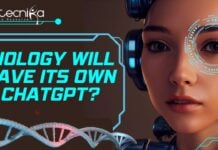Neuralink’s Blindsight: A Breakthrough in Restoring Vision
Imagine being asked to blindfold your eyes for one whole day! How would you feel? Unimaginable, right? Now, Think about those blind people who are living without vision—some from childhood, some from accidents and trauma. But with the advancement in technology and scientists working day and night, we have a breakthrough in restoring vision!
Neuralink is a neurotechnological company launched in 2016 by Elon Musk, Jared Birchall (CEO), and a team of seven scientists and engineers. The company aims to enhance human cognition by developing implantable brain-machine interfaces (BMIs) capable of recording and transmitting neural signals.
The latest innovation, “Blindsight” by Neuralink, is a type of brain implant specifically designed to help blind people. A person who is born blind or anyone who has lost vision because of infections, diseases, or injuries can benefit.
While most of the current vision restoration technologies that are available in the market focus on rectifying defects in the eye, this innovation is unique as it targets the brain directly. It basically helps stimulate the visual perception in the brain, even for people suffering from total blindness.
The primary objective of this device is to offer the user
a functional vision. As it is still in development, vision can be limited to low resolutions only. Just understanding the surroundings and navigating will be the primary idea for the design. With the advancement, one can expect a high-resolution device in the future.The Blindsight device from Neuralink will enable even those who have lost both eyes and their optic nerve to see.
Provided the visual cortex is intact, it will even enable those who have been blind from birth to see for the first time.
To set expectations correctly, the vision… https://t.co/MYLHNcPrw6 pic.twitter.com/RAenDpd3fx
— Elon Musk (@elonmusk) September 17, 2024
How Blindsight works?
The visual cortex is the part of the brain responsible for processing visual information. The Blindsight device uses a part of the brain, which is an implant, to stimulate this visual cortex. This implant comprises a tiny chip along with electrodes. Electrodes are small wires that help in transmitting electrical signals to the brain, very similar to how a healthy eye sends signals to the brain with the help of the optic nerve.
One more component is the external sensors or cameras helping in capturing the visual data and transfer the information to brain for further processing.
These components in the device help a blind person understand the surroundings well. The Blindsight device works efficiently by creating a direct connection between the brain and surroundings, excluding the damaged parts of the eye.
We have received Breakthrough Device Designation from the FDA for Blindsight.
Join us in our quest to bring back sight to those who have lost it. Apply to our Patient Registry and openings on our career page https://t.co/abBMTdv7Rh
— Neuralink (@neuralink) September 17, 2024
FDA’s Breakthrough Device Status: What Does It Mean?
For innovative ideas like the development of devices that has the potential to help mankind in treating a particular condition and improve life style, FDA approves a breakthrough status. This enables the development process in much faster way.
This approval status does not mean that the device is already available for the public. It means that, Neuralink has to work with the FDA in all the development stages and make sure that the product is available for public in a much quicker time with proven safety and effectiveness.
The Science Behind Vision Restoration
We perceive information from our eyes, and then a series of processes occur inside our brain to help us visualize the surroundings.
- The first step is the refraction of light and light entering our eye.
- Then, the lens will focus light on the retina.
- Photochemical activation of the retina.
- Photoreceptors (rods and cones) convert light into electrical signals.
- Transferring the signals to the brain through the optic nerve.
- Processing of electrical signals
- Perception of image.
Every part of the eye and brain is vital for the perception of images from surroundings. Any minor damage or disturbance in this flow of information leads to blindness.
The Blindsight device is a revolutionary approach to treating blindness as it bypasses the function of the eye altogether. It directly sends the message to the brain i.e the visual cortex and helps in perceiving the image.
Benefits from Blindsight
Blindsight is specially designed for people with severe visual impairments or total blindness. It can benefit patients with optic nerve damage, retinitis pigmentosa, or age-related macular degeneration.
In the future, the device could also help people with less severe visual impairments or those who want to enhance their natural vision. As the technology advances, its applications may extend beyond medical necessity and into the realm of vision enhancement for everyday use.
Challenges and Ethical Considerations
Like a coin with a head and tail, any innovation has pros and cons.
The technology is still in its early stages of research and development and may take longer to be available in the market. Safety and cost-effectiveness are significant concerns. Before implementing such devices, one should also understand the ethical considerations.
Though it is an excellent initiation from Neuralink’s Blindsight to restore vision to the blind, with FDA Breakthrough Device Status, the implant is now on a fast track toward further testing and potential approval. However, much more research is still required to understand and implement it.
With this breakthrough technology continuing to grow, our future will not just stop at the restoration of vision for blind people; it is possible to have a significant enhancement of the natural vision of the human eye. With the right developments, Blindsight may one day revolutionize how we see the world.
Neuralink’s Blindsight – Latest News






























